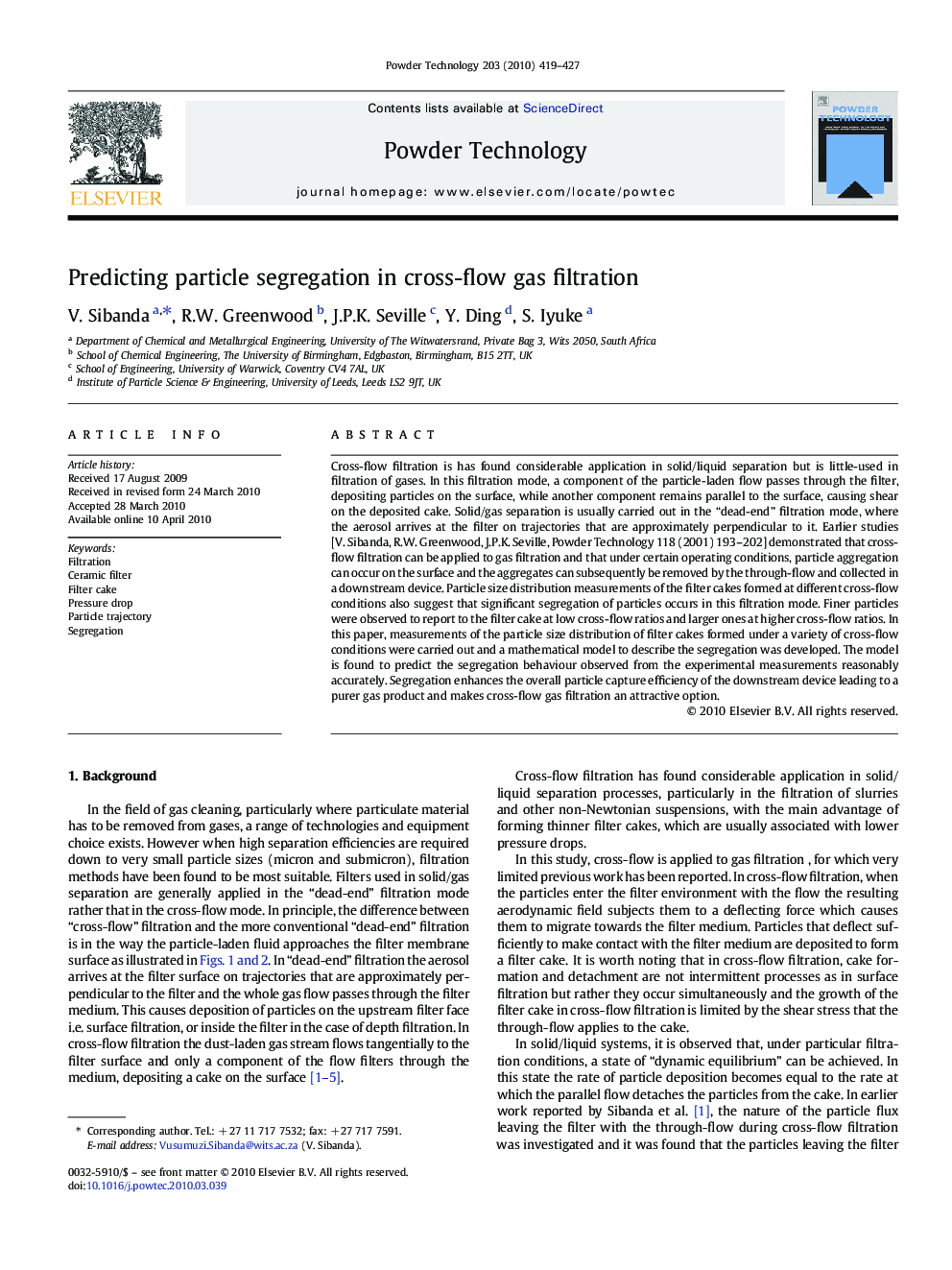| Article ID | Journal | Published Year | Pages | File Type |
|---|---|---|---|---|
| 237773 | Powder Technology | 2010 | 9 Pages |
Cross-flow filtration is has found considerable application in solid/liquid separation but is little-used in filtration of gases. In this filtration mode, a component of the particle-laden flow passes through the filter, depositing particles on the surface, while another component remains parallel to the surface, causing shear on the deposited cake. Solid/gas separation is usually carried out in the “dead-end” filtration mode, where the aerosol arrives at the filter on trajectories that are approximately perpendicular to it. Earlier studies [V. Sibanda, R.W. Greenwood, J.P.K. Seville, Powder Technology 118 (2001) 193–202] demonstrated that cross-flow filtration can be applied to gas filtration and that under certain operating conditions, particle aggregation can occur on the surface and the aggregates can subsequently be removed by the through-flow and collected in a downstream device. Particle size distribution measurements of the filter cakes formed at different cross-flow conditions also suggest that significant segregation of particles occurs in this filtration mode. Finer particles were observed to report to the filter cake at low cross-flow ratios and larger ones at higher cross-flow ratios. In this paper, measurements of the particle size distribution of filter cakes formed under a variety of cross-flow conditions were carried out and a mathematical model to describe the segregation was developed. The model is found to predict the segregation behaviour observed from the experimental measurements reasonably accurately. Segregation enhances the overall particle capture efficiency of the downstream device leading to a purer gas product and makes cross-flow gas filtration an attractive option.
Graphical abstractIn this study, cross-flow filtration, a technique commonly used for liquid filtration, was investigated for gas filtration. Results of the earlier studies of the same work demonstrated that there is significant particle aggregation associated with gas cross-flow filtration. In the current paper, segregation has been proved to occur and that it has an effect of enhancing the particle capture efficiencies of the filter/cyclone system. A mathematical model describing the segregation is developed and found to reasonably predict experimental measurements.Figure optionsDownload full-size imageDownload as PowerPoint slide
